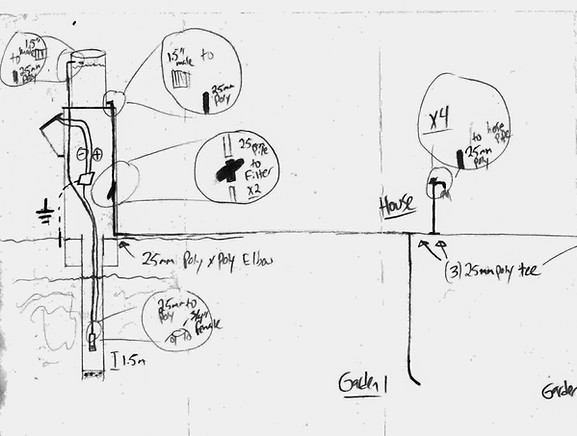
Rural Roots
Macademia Farm
A solar-powered irrigation tower and macadamia farm in my former Peace Corps village. It’s part of "TradeRoots: Building Prosperous Markets Across Borders", a U.S. State Department Citizen Diplomacy Action Fund–supported program aimed at equipping this rural community to produce high-value crops for export to the American market. The project provided reliable water and established perennial crops that can generate long-term income. The other part of this program can be seen here.

Farming in Zambia is getting harder as unsustainable agricultural practices drive deforestation, soil loss, and aridification. Perennial crops and agroforestry can rebuild soil, buffer climate risk, and create reliable cash flow. Young trees are vulnerable before they establish; reliable irrigation is what enables farmers to make the jump to perennial agriculture.
Chimela Nyirenda and the Rural Roots group are some of the hardest working people I've had the pleasure of working with, we did some agroforestry and gardening projects together. However, these initial projects were limited by their reliance on hand irrigation: close to 100 buckets of water hauled by hand each day.


These projects always start in my head and then go on paper. This one came together at an inconvenient time: while in Saudi Arabia at the Red Sea Research Center, I drafted the tower blueprint and the pipe/wiring diagrams between ocean fieldwork sessions.
The pump is a D&S 120H, a small but powerful model I’ve used with great results on other projects. It runs on a single 200-watt solar panel and delivers about 5 m³ of water per day in this setup. It’s direct DC with MPPT: efficient and simple, with few electronics to fail.


This was my quickest project in Zambia: two weeks on the ground, with a four-day national park trip in the middle. That meant long days of running around crazily, building all of the systems concurrently, and training the team as we went so the system can run without me.
One snag: I could only find a single water-level electrode in the whole country. I used it in the well to protect the pump from running dry. To prevent tank overflow, I "MacGyvered" a second sensor from two pieces of a stainless-steel butterknife, and it continues to work flawlessly.


This was the narrowest tower yet, so rigging had to be precise. We used tag lines and slow, nerve-racking lifts; after an hour of careful maneuvering, the tank finally flopped right into place.
With the tank in place, we mounted the panels, ran conduit, and finished the wiring. Then we ran the plumbing and chased down leaks until it worked as intended.


This tower was built around a well built by the Marion Medical Mission. It was labelled as 5.5 meters deep, and I knew that the aquifer level here was approximately 2.5 meters deep from our previous work. While dropping the pump into the well, we realized that we had been bamboozled by the Christian organization, and the well was only 3 meters deep, leaving us without enough depth to safely pump from.
Out of time, we had to hire a local company to drill a borehole. Despite water being available at less than 3 meters, we decided to drill to the full depth of 50 meters, to ensure that we never have to do it again.


While solar stands are available from the manufacturer, we chose to source and build with local resources as much as possible, channeling more money into the community and ensuring long-term repairability.
All the macadamia trees are in the ground, with the intercrops soon to follow. With a little bit of luck, we’ll be cracking the first nuts in 2027













